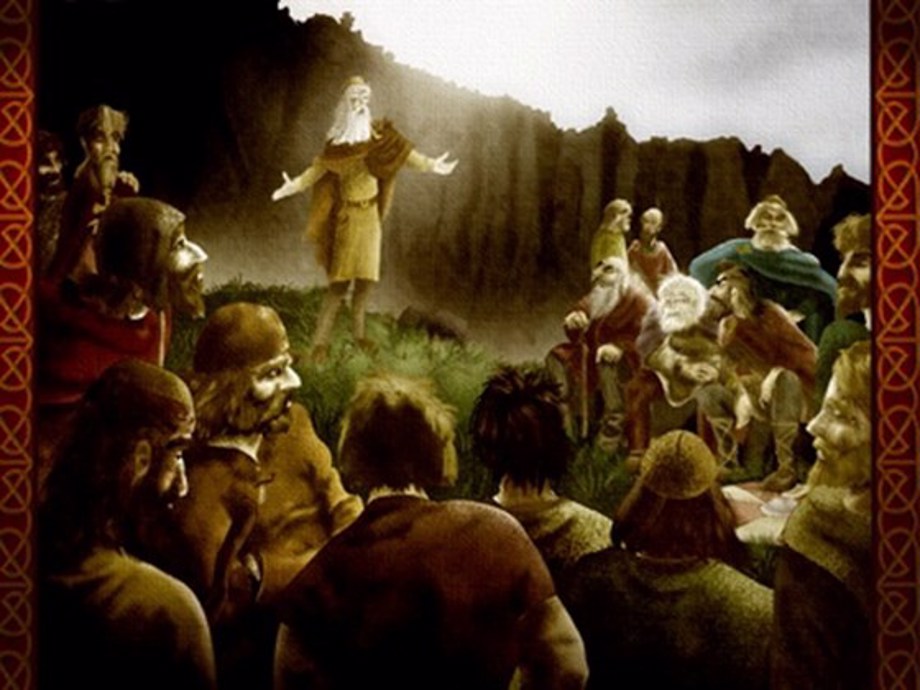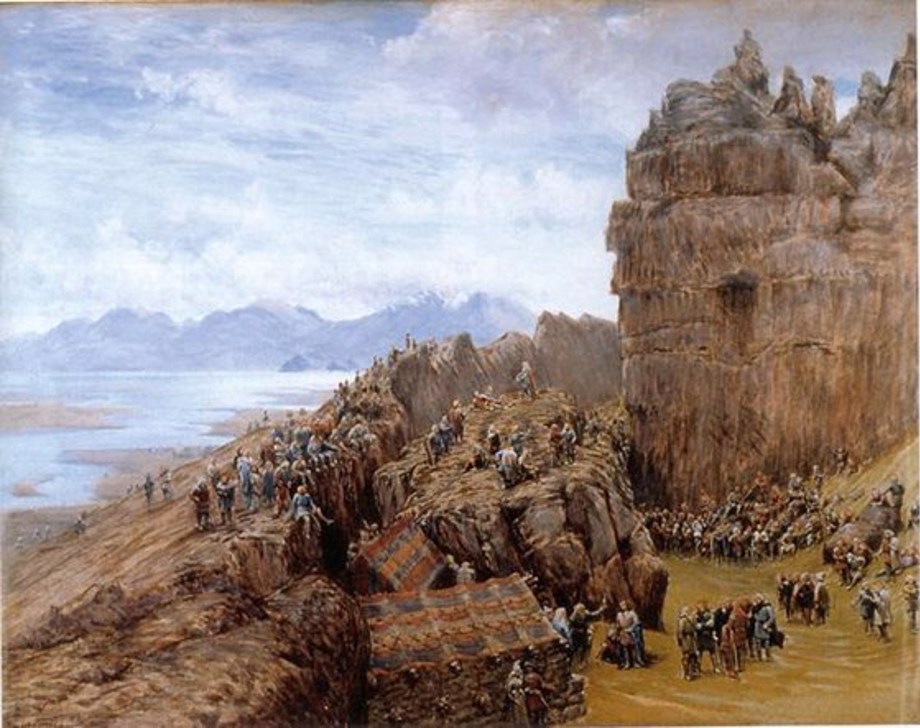Lögberg
The Icelandic Commonwealth period ran from 930 till 1262. At that time, Lögberg, was the hub of the Alþing meeting. The Law Speaker, who proclaimed the laws of the Commonwealth out loud, had a special place there. He memorised the laws and had 3 years to recite all of them, but each summer he had to recite the procedural rules.
The Law Speaker was chosen by the Lögrétta, the Legislative Assembly, for a three-year term and was the only paid employee of the Commonwealth. At the Alþing, the Law Speaker was the most powerful person in the country, but in-between, he was officially powerless, although he enjoyed the esteem of his contemporaries because of his important role.
At Lögberg anyone could step forward; speeches were given about important matters, and news was reported of significant events. Inauguration and dissolution of the assembly took place at Lögberg, where rulings by the Law Council were announced, the calendar was confirmed, legal actions were brought and other announcements made which concerned the entire nation.

Lögberg (e. Law rock) was where laws where recited. Every man could also bring his disputes up on Lögberg and speak freely.
Þingvellir National Park / Gagarín
Anyone attending the assembly was entitled to present his case on important issues from the Law Rock. The events at Lögberg were later brought alive through descriptions in many of the Icelandic sagas. The lead-up to the adoption of Christianity is well described in Njáls Saga:
"The following day both sides went to the Lögberg, and Christians as well as heathens named witnesses and denounced each others laws and regulations. Then there arose such a tumult at the Lögberg that no one could hear what anyone else said."
The role of Lögberg disappeared early on in the history of the Alþing when Icelanders took allegiance to the Norwegian king in 1262 with a special covenant, Gamli sáttmáli.
Because of this, the precise location of the Lögberg has been a matter of some debate, but two locations have been pointed out as the most reasonable ones. On one hand, Lögberg could be the flat ledge at the top of the slope Hallurinn, north of the Hamraskarð pass, where the flagpole is now. On the other hand, Lögberg might have been in the Almannagjá fault itself, up against the higher rock wall.
Hopefully, archaeological research will one day reveal indications of the location of Lögberg, but most likely we will never have the means to pinpoint it beyond any doubt.

Multiple artists have portrayed Lögberg. W.G. Collingwood travelled Iceland in the 19th century. He made several paintings of Þingvellir and other sites in Iceland.